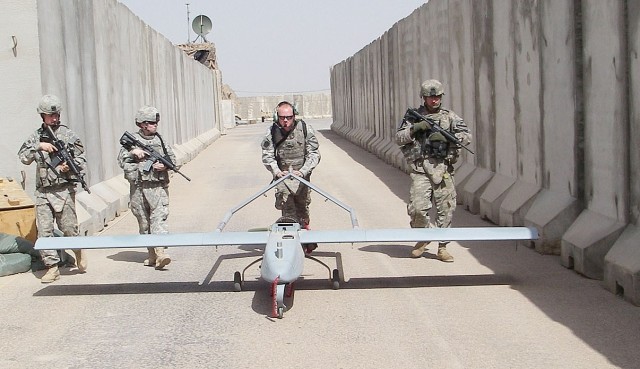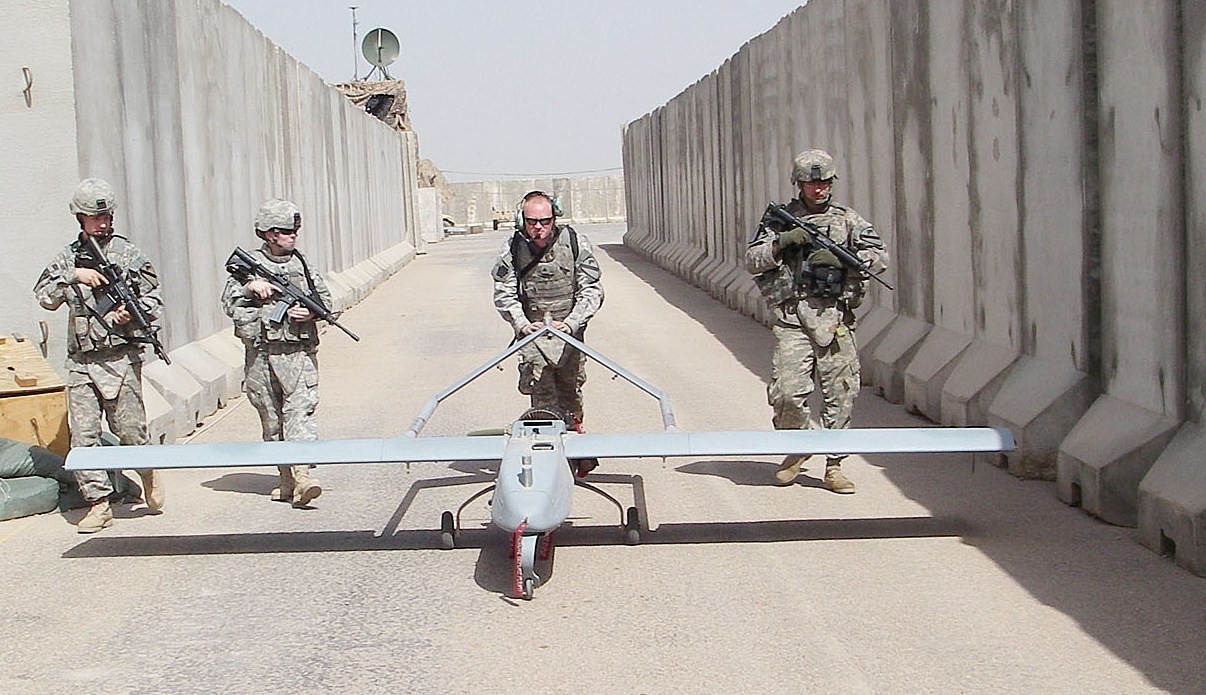FORT RUCKER, Ala. -- Right before the Army Unmanned Aircraft Systems Roadmap was unveiled at the April 15-17 Army Aviation Association of American Conference in Fort Worth, Texas, Col. Christopher Carlile, director of the Unmanned Aircraft Systems Center of Excellence talked about how Soldiers are what make the systems effective.
Carlile emphasized a part of the Army UAS story he wants people to know more about - the firsthand experience of noncommissioned officer Soldiers who have operated UAS in theater.
NCOs play an integral role in the warfight, and their knowledge of these systems as ground warfighters and UAS operators needs to be captured and passed on to future warfighters, Carlile said.
Carlile talked about the NCOs who are the backbone of the Army, providing the overwatch that has become known as the "eyes of the Army."
"When you look at the quality of the NCOs that we are putting in the UAS operator realm, they are operating at Air Force commissioned officer level. They may be young, but what they do is saving the lives of Soldiers who are in other branches. These guys are the constant vigilant eyes in the warfight," Carlile said.
He said it is imperative these Soldiers have the ability to provide UAS support while serving alongside their brothers-in-arms in theater. Being nested with the Soldiers for whom they provide overwatch is not only a good idea, but is critical to mission accomplishment for the U.S. Army.
Soldiers like Sgt. 1st Class Brian Miller, a UAS operator, keep persistent eyes on patterns of life using UAS. By actually being in theater they are privy to the day-to-day climate of life and battle scenario. Their casual conversations on a daily basis with fellow Soldiers and servicemembers they serve alongside in the warfight create stronger eyes of understanding for overwatch missions, save the lives of Soldiers who are on the ground kicking in doors, and help them make life-saving decisions.
These Soldier UAS operators know who to call for air support, when to call and how to lead and assist in the fight from within and above. They depend on this firsthand knowledge of the subtleties of life and the ground climate of the local area to carry out the boots-on-the-ground mission. They use this knowledge to coordinate, assess and team with manned aircraft and with assets on the ground.
The UAS Roadmap is proof the Army is coming together as a team, known as the Aviation Enterprise, to make UAS more successful in the mission downrange, which means great strides have already been made for the future of UAS. A first step was the creation of this document to project the way ahead.
The bottom line of the Army UAS is personified in the NCO, Carlile said, which gives the Army its own unique UAS story.
"It's about the Soldier," Carlile said. "The culture has changed in the Army, and in Army Aviation. NCOs are a vital part. They've always been the backbone, and now they're serving as scouts and eyes."
And, most important, they are saving lives, he said.


Social Sharing